Summary:
A multi-location home health organization serving 26 counties with a census of 1500 patients transformed their operations through comprehensive scheduling and workflow optimization. Initially struggling with poor visibility between schedulers and staff, missed treatments, and productivity below 4.5 weighted units per day, the organization implemented a strategic solution combining standardized communication tools and automated processes. By introducing standardized SmartText for therapy and SBAR handoffs, implementing Book It and float boards, and developing streamlined workflows for intake and scheduling teams, they achieved targeted improvements. Documentation time decreased and overall productivity increased by 10% through reduced travel time and optimized staff routing. The new system decreased admission processing time and significantly reduced missed date-specific treatments. The implementation of clinician-directed scheduling and scheduler-directed protocols for admissions and float visits created a more efficient, geographically optimized operation that better served both staff and patients across their extensive service area.
Client Overview:
A multi-location home health organization serving 26 counties with a census of 1500 patients faced significant operational challenges in scheduling efficiency, staff productivity, and care coordination, impacting patient care and organizational performance.
Challenges Addressed:
Scheduling and Communication: Limited visibility between schedulers and staff created coordination gaps, resulting in missed date-specific treatments and admission delays. Staff scheduling lacked geographical optimization, leading to increased drive times and reduced efficiency. Documentation processes were time-consuming and inconsistent, particularly in critical handoff communications between intake and scheduling and admission clinicians.
Operational Performance: Staff productivity remained below target at 4.5 weighted units per day, while inefficient geographical assignment of staff routes led to excessive travel time. Documentation inconsistencies created risks in care continuity and communication between teams.
Solution Implemented:
Developed a comprehensive system optimization approach combining standardized communication tools, automated scheduling processes, and streamlined workflows to enhance coordination between intake, scheduling, and clinical teams. Implemented integrated solutions including SmartText standardization, float boards, and Book It functionality.
Approach Taken:
Standardized Documentation:
- Implemented standardized SmartText for therapy documentation
- Created standardized SmartText SBAR handoff templates for intake and admitting teams
Scheduler Workflow Optimization:
- Established float boards
- Created specialized workflows for intake, schedulers, and managers
- Implemented automated scheduling system – Book It
- Developed scheduler-directed protocols for new admissions and float visits
Results Achieved:
- Reduced documentation time to 5 minutes per visit
- Increased overall productivity by 10% through reduced travel time and improved scheduling
- Decreased admission processing time
- Significantly reduced missed date-specific treatments and admission delays
- Enhanced geographical optimization of staff assignments
- Improved communication consistency and accuracy in handoffs
Stakeholder Testimonial:
The most beneficial and positive experience we’ve had throughout our Epic transformation has been the implementation of high-level workflows and a deeper understanding of Epic’s capabilities. These changes have allowed us to enhance patient care, improve clinician productivity, and improve satisfaction. The ability for both field staff and back-office teams to access real-time patient and scheduling data has been a game-changer by creating transparency and quickly identifying pain points for both staff and leaders. It’s made making quick adjustments when needed easier, improved communication across departments, and kept everything running smoothly.
Optimizing our scheduling workflow reduced documentation time by 5-10 minutes per patient and increased productivity by an average of 10%. But more importantly, these changes gave clinicians more time to focus on the heart of what we do—patient care.
– April Bogan DPT – Director of Home Health


